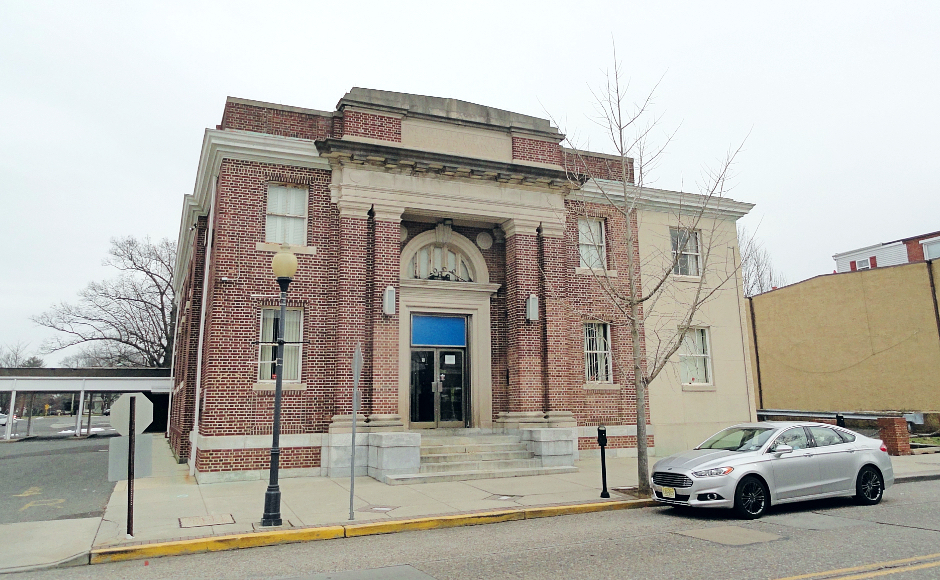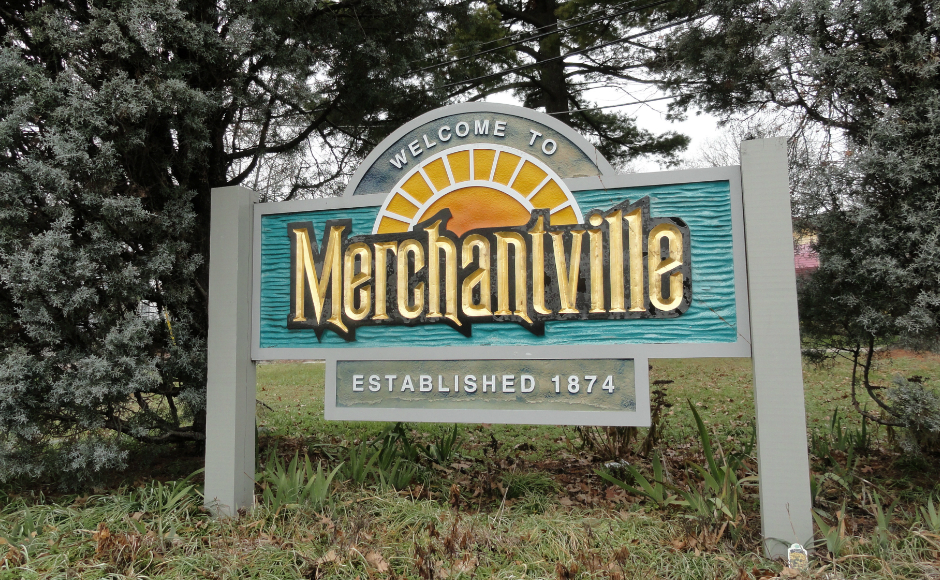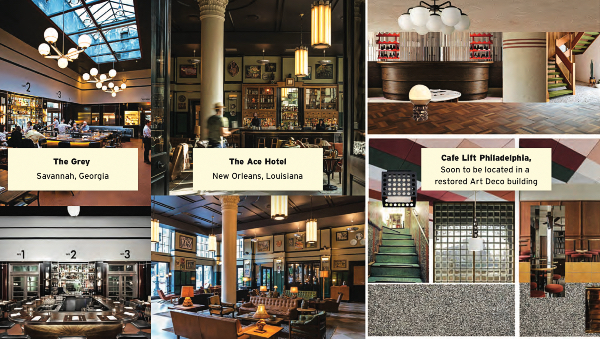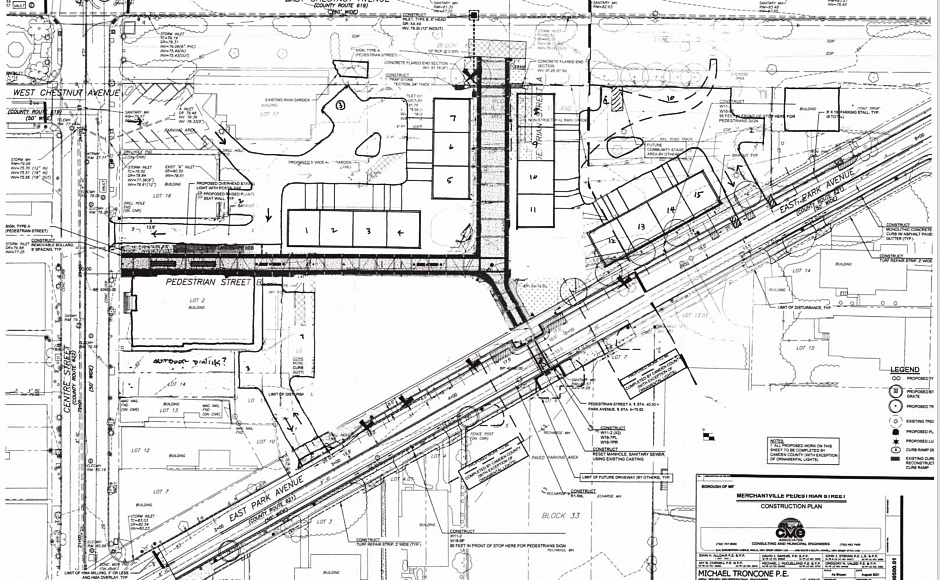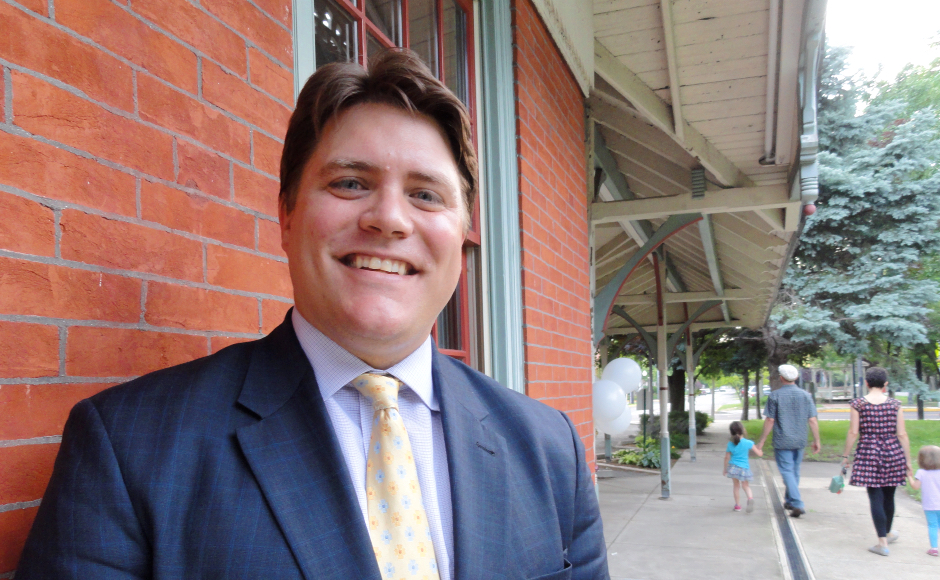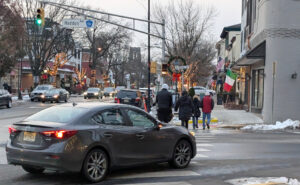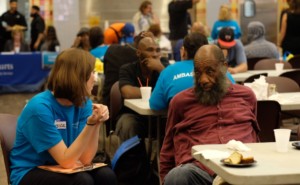With conditional agreements in place to add new residential units and a restaurant concept in the former PNC Bank, the borough seems poised to make good on its long-anticipated redevelopment plans.
By Matt Skoufalos | August 24, 2022
One of the longest-vacant properties in downtown Merchantville could be headed for an adaptive re-use.
The First National Bank & Trust Company of Merchantville, most recently in operation 15 years ago under the ownership of PNC Bank, will undergo repairs this fall while its conditional redevelopers continue to work out a deal for the property.
The group that plans to set up shop in the historic bank building is led by Michael and Jeniphur Pasquarello of Haddonfield, whose 13th Street Kitchens restaurant group operates Philadelphia destinations Prohibition Taproom, Kensington Quarters, La Chinesca, and Café Lift.
Although the project is still in its early stages, the family at its center is energized by the possibility of breathing new life into the bank as “a contemporary, wood-fired American bar and restaurant with a private event space and dining garden,” according to its presentation to the borough council in April.
“I believe in redevelopment,” Michael Pasquarello said. “We love old architecture, and stepping into something and rehabbing it to its original glory; respectfully renovating. And we also like to be a part of pioneering.
“We like to be there as things are starting to reinvigorate,” he said. “We only want to complement it.”
In reviving the historic bank, the Pasquarellos are reaching back in time to find their design cues. Among the exemplars of their inspiration, they name French deco geometry of the Ace Hotel in New Orleans, Louisiana; The Grey, a chic Savannah, Georgia eatery that inhabits a repurposed 1938 bus terminal; and another planned Cafe Lift location with a similar art deco aesthetic in Philadelphia.
The couple is keeping any specific plans for Merchantville under wraps, except to say that its eatery will source seasonal ingredients from local farmers and suppliers.
“We’re still in the phase of trying several ideas,” Michael Pasquarello said. “We haven’t really done any advanced architecture or planning for the space right now.
“Everybody’s goals are to cross the finish line,” he said. “The building is going to require an investment; we just want to make sure that it makes sense.”
At Monday’s special meeting of the borough government, the council approved a measure granting 13th Street Kitchens limited-use property rights to stabilize the building and add a roof.
Since the borough still owns the parcel, those rights are capped at $150,000 worth of work; if the project runs over that, additional approvals will be required.
The agreement also includes a clawback provision that would allow the conditional redevelopers to be reimbursed for the cost of their efforts should the two sides fail to finalize an agreement for the property.
Michael Pasquarello said the work agreement is an important, good-faith mechanism that will allow his team to prevent further water intrusion into the building while the redevelopment deal is worked out.
“We want to dry the building out and get it under wraps, and give it a winter hug,” he said. “We hope to see it become something wonderful for the community. I’m okay with it taking as long as it needs to take.”
Merchantville Mayor Ted Brennan said the borough council thought of the repair measure as “a tactical risk worth taking” while both sides negotiate the terms of a PILOT (payment in lieu of taxes) agreement that is expected to be part of the final redevelopment plans.
“We thought the lease showed good faith on the borough’s part and the redeveloper’s part that we intend to move forward with this project,” Brennan said.
The mayor said it’s likely that any deal to rehab the bank building will be “a total-term, upwards of 30-year PILOT with an appropriate economic incentive” that “absolutely would have a component that would include money going to the [borough public] school.”
Townhouse developments
Brennan said the community is also likely to come to similar terms with the Hainesport-based Property Management Services (PMS), the conditional redeveloper for a separate, residential component of the borough downtown.
PMS is working out a proposal to construct 15 townhomes in the vicinity of the bank building project; an area triangulated by East Park and East Chestnut Avenues, and Centre Street. Its principal Tristan Sylk said a PILOT will help square up the costs of his new-construction project with the local tax rate.
“It’s going to be a very technically scheduled, involved project,” Sylk said. “We don’t have sewer, electric, gas, water. We’re surrounded on three sides by public rights-of-way and public parks.
“Once we get into it, it’s only going to take a year to get everything wrapped up, but the lead-up is probably 18 months,” he said.
Sylk said PMS is underwriting the project as a rental project, but designing the townhomes to be sold “if that turns out to be the best thing.”
“It’s not about a profit center, it’s more about drawing people into the community for the long-term,” he said. “If we can, over the next five to 10 years, create a strong downtown, owners are probably better for Merchantville.”
While the terms of the housing project are yet to be defined — Sylk said he’s hoping to present a plan for the project by the end of 2022 or the beginning of 2023 — the 15 townhomes will be designed “as architecturally Merchantville as possible,” a nod to the distinct local character of homes in the borough.
“We’re going to make sure it’s not a homogenous project,” he said. “It’s going to be something that’s heterogenous that fits well, not just building for square footage.”
Sylk, who introduced the Pasquarellos to Merchantville after the three partnered on the Café Lift Haddonfield location, said the couple’s plans for the bank building align with his vision for contributing to a vibrant borough downtown.
“[Michael]’s got a community-driven mindset,” he said. “We’re working together in our own rights, and we both have the same goals. His and my priorities are very much in line. He and Jeniphur have such a great team, such a great aesthetic, and a great product.”
Just right?
For Brennan, bringing in these projects would close a redevelopment process that’s lasted the length of his political career.
Although prior plans to address the biggest gap in the borough downtown haven’t worked for one reason or another, he said this one feels “right-sized” for the space and the community.
“This is the fourth or fifth version of this in the past 25 years,” the mayor said. “Sometimes it feels like Goldilocks and the Three Bears trying to balance those different things. What’s right for density, what’s right for taxes, what’s the right mix of commercial versus residential?
“In our current iteration, we found the right partners who share the right-sized vision for the borough, and understand the limitations that the borough has,” Brennan said.
“You don’t have a population base, you don’t have the destination businesses, you don’t have professional businesses bringing jobs in town where people have to utilize the stores and restaurants,” he said. “Without that critical mass of people walking on a day-to-day basis, you have to right-size it.”
Previous redevelopment approaches in the downtown dated as far back as the 1990s; more recent concepts — like those from the Ragan Design Group of Medford in 2016 — stalled after the borough demolished some abandoned buildings in the two-acre project zone.
Then, in 2018, Viking Associates of Cherry Hill pitched an 88-unit town center project that included an acre of public space and a 15,000-square-foot new retail component. But ultimately those plans fizzled, as well.
The much-smaller approach Merchantville is weighing at present includes elements of the prior designs — public gathering spaces, a commercial component, a residential aspect — plus a federal Transportation Alternatives Program (TAP) grant that will construct a walkway tying in pedestrian access to the downtown shopping district, public parking, and the borough multi-use path.
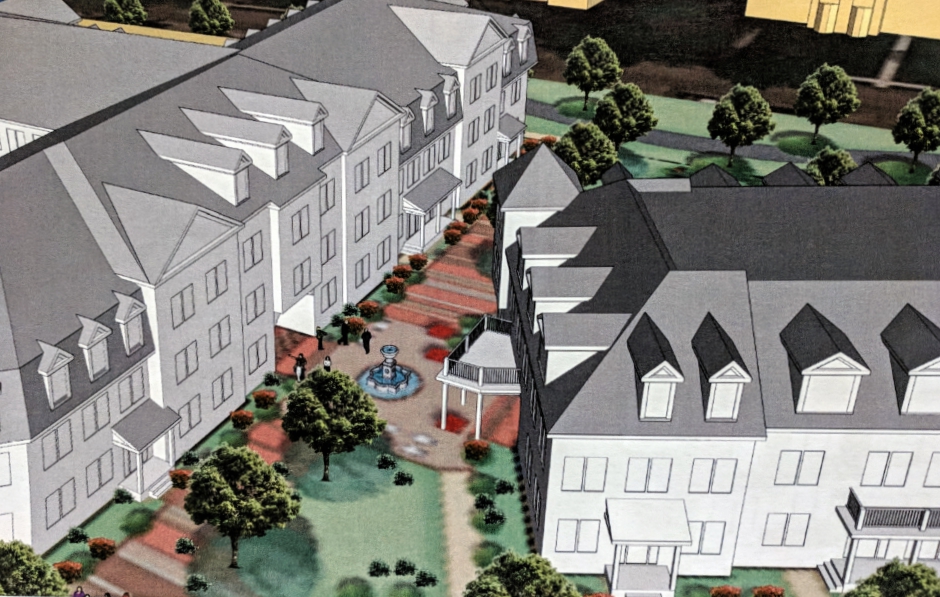
Renderings of the proposed two buildings at the heart of the 2018 Merchantville Town Centre project. Credit: Viking Associates.
“It creates a connected downtown development itself,” Brennan said. “It feels like Merchantville.
“I think, to a certain extent, we are fortunate that we didn’t build something previously that would right now be empty storefronts,” the mayor added.
“We’re fortunate that we’re going through this process now, and we’re also fortunate that there’s a bit of a renaissance in a suburban downtown right now coming out of COVID,” he said.
“We’re staring down a real opportunity here.”
Complementing the projected redevelopment plans, Merchantville has also enjoyed a recent infusion of interest in its downtown business district that Brennan said leaves the borough “teed up to be very successful with a lot of things that meet our vision.”
These include the change of ownership at the Blue Monkey, plans for new restaurants Omega’s and The Shake Seafood, the addition of PEAK Secondhand, and the anticipation of Gynsyng LLC, a recreational adult-use cannabis operation, moving into the recently vacant Rite Aid on Centre Street pending the approval of the state cannabis regulatory commission.
“You can see how we can start to sort of build this thing up into more service-oriented businesses, and you get a critical mass and a real vibe around the borough.” Brennan said.
The mayor also was quick to point out that it’s not just business development, but community development that’s infusing new life into the community. The revival of the Merchantville Market Off-Center by locals Carolyn Busa, Katherine Carpenter, Caitlin Gardner, and Janeen Hovnanian has been the kind of downtown gathering Brennan said he hopes the redevelopment will support, as well as The Station Cafe, which he described as “an absolute cog in the wheel.”
“There has been a generational shift,” he said. “We have a lot of young families, individuals, couples, people coming to the community.
“To have people come here and invest in our community, and invest their time and effort into what goes on in the community, there’s not much more you can ask for as a mayor than that,” Brennan said. “In small towns, tried and true, that’s been the path to a vibrant community.”


